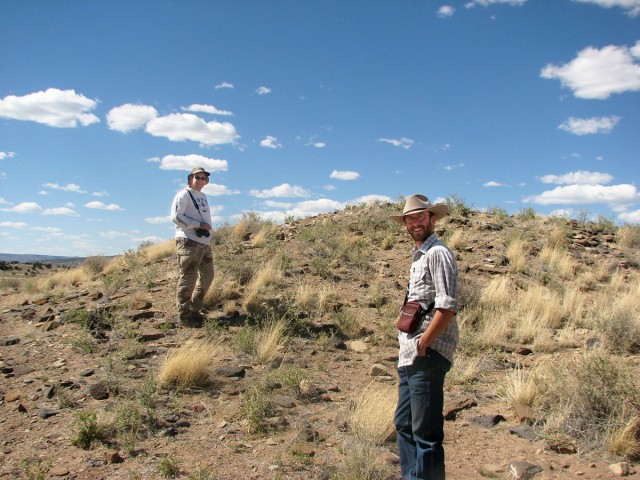- Home
- >
- Preservation Archaeology Blog
- >
- An Archaeologist’s View of “Digger” Shows

Host Scott Michlin recently welcomed me to his morning radio show on KSJE, the San Juan College radio station in Farmington, New Mexico. I’ll be on the air with an archaeology update each month. For the month of October, I spoke about the recent trend in “digger” shows on reality TV. You can listen to our discussion here.
Currently, three cable channels—THREE!—are airing digger-themed shows on national television: Spike TV, the Travel Channel, and the National Geographic Channel. These shows feature participants digging into archaeological or historic sites to find artifacts and “understand the past.” They typically focus on historic properties on private lands. The Society for American Archaeology, the New Mexico Archaeological Council, and many other local and state organizations have written to the National Geographic Society requesting that National Geographic Channel cancel or substantially modify its Diggers show. (You can read Archaeology Southwest’s official statement from March 2012 here.)
There are several reasons why I am deeply concerned about these programs. First, they show “diggers” digging into historic sites with exaggerated enthusiasm and little care. This promotes the idea that vigorous, hurried digging is the best way to understand historic sites—and nothing could be further from the truth. Ethical archaeologists and other professionals painstakingly excavate sites that have been chosen for very specific reasons. The tenets of Preservation Archaeology call for minimal dirtwork to extract the most information possible, be it artifacts, historic floor or other structural surfaces, or context-related information. Indiscriminate, rapid digging allows for none of these things.

Second, digger shows promote the idea that anyone is qualified to dig up an archaeological site and learn amazing things about the past. This attitude prioritizes the collected items—the artifacts—and completely ignores the vast amount of work archaeologists do after artifacts are collected in the field. Fieldwork typically represents only 25% of the effort in professional, ethical archaeology. Following fieldwork, archaeologists undertake detailed analyses, data computation, research, and reporting. All of these steps allow archaeologists to understand artifacts within the complicated history of a site or a region and then share that understanding with the public. Digger shows compress these critical research steps into a 30-minute package that disregards most tenets of scientific archaeology.
Finally, these shows make it seem as if archaeological and historic sites are “waiting” on the landscape to be rapidly dug by the first person who happens to find them. I see several issues with this approach. First, the vast majority of archaeological and historic sites are on public lands of one type or another. Federal and state regulations prohibit digging or collecting on public lands and impose substantial criminal penalties. Digger shows rarely, if ever, speak to the consequences of destroying cultural sites on public lands. Moreover, archaeological and historic sites are irreplaceable, nonrenewable resources. This is why archaeologists create research designs and regulatory authorities require permits before any work begins. This is also why the Preservation Archaeology approach seeks to optimize what remains for future scientific investigation, by preserving sites in place, mapping what we can see at ground surface, conducting only very limited subsurface work (usually in trash deposits, rather than architecture), and examining existing collections of artifacts. We feel that sites not threatened with imminent destruction should be “banked” for exploration with technologies and techniques of the future.
One thought on “An Archaeologist’s View of “Digger” Shows”
Comments are closed.
Explore the News
-
Join Today
Keep up with the latest discoveries in southwestern archaeology. Join today, and receive Archaeology Southwest Magazine, among other member benefits.
Thank you so much for this very thoughtful and well-written article. It deserves a very wide reading. We at the the ICOMOS International Scientific Committee for Archaeological Heritage Management are also appalled at these shows, and perhaps as much that National Geographic is sponsoring one of them. You can read our letter of protest here: http://www.usicomos.org/files/icahm%20protest.pdf
Your readers might also be interested in this article, which provides a bit more insight into the devolution of what was once termed educational television: http://www.vocativ.com/10-2013/tut-tut-nat-geo-bribe-egypts-famed-indiana-jones/?utm_source=taboola
Doug Comer